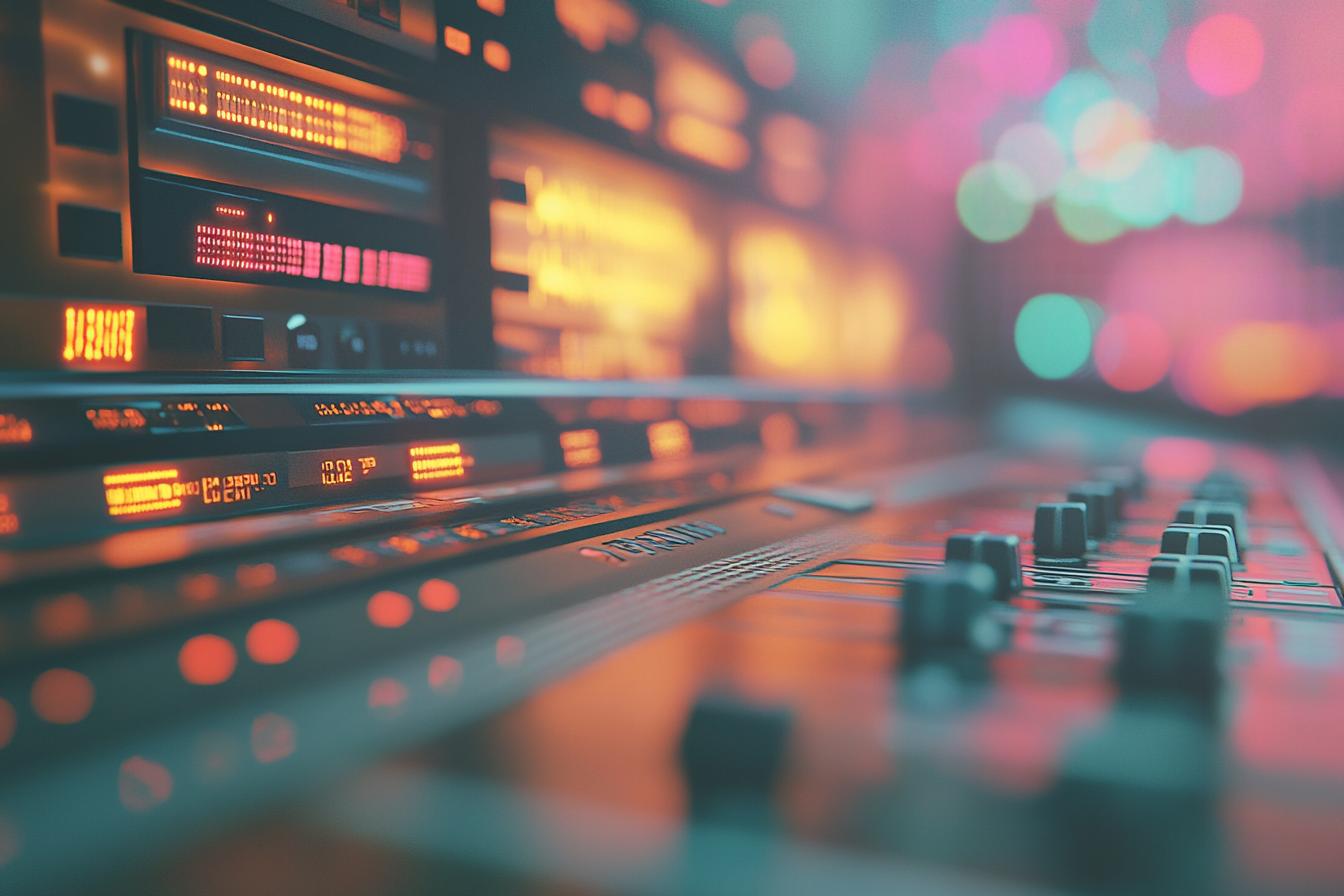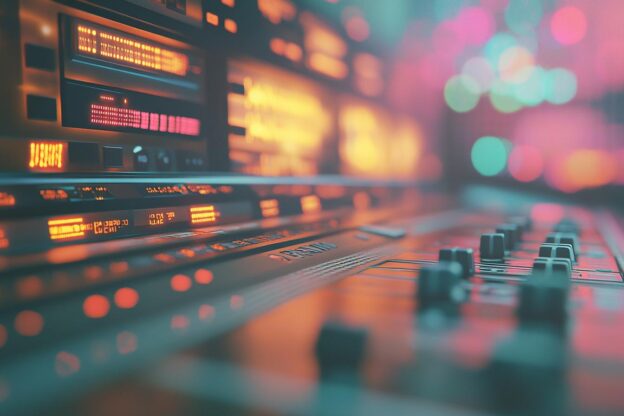Radio news exhibiting encompasses the process of presenting and showcasing radio news content in a captivating and informative manner. This can involve various approaches, such as creating engaging audio exhibits, interactive displays, and multimedia installations. These exhibitions aim to educate and entertain audiences about the power of radio, its history, and its ongoing role in society. By bringing the world of radio to life through innovative and immersive experiences, these exhibits foster a deeper appreciation for the medium and its impact on our lives.
One intriguing example of radio news exhibiting is the use of audio archives to tell compelling stories. Imagine listening to a recording of a historic event, such as a pivotal speech or a breaking news report, and being transported back in time to witness the moment unfold. These audio archives offer a unique window into the past, allowing audiences to connect with history on a deeply personal level. Moreover, by showcasing the evolution of radio technology and its influence on storytelling, these exhibitions reveal how the medium has shaped our understanding of the world and the events that have shaped it.

Radio News Exhibiting
1. Radio News Exhibiting
Radio news exhibiting is a unique and engaging way to showcase the power of audio storytelling. It involves creating immersive experiences that transport audiences into the heart of news events, allowing them to connect with stories in a visceral and personal way. This can be achieved through a variety of methods, such as using interactive displays, sound installations, and even live broadcasts. By combining cutting-edge technology with compelling narratives, radio news exhibiting offers a fresh perspective on how we consume and engage with news.
The key to successful radio news exhibiting lies in creating a compelling narrative that resonates with audiences. This involves carefully selecting the stories to be showcased, crafting engaging scripts, and using sound design to evoke emotions and create a sense of immediacy. Furthermore, it’s crucial to consider the overall experience, ensuring that the exhibit is visually appealing, informative, and interactive. By prioritizing audience engagement, radio news exhibiting can transform the way we experience and understand the world around us.
2. Presenting radio news in a museum
Imagine stepping into a museum exhibit dedicated to the history of radio news. You hear the crackle of static, the familiar voice of a news anchor, and the unfolding stories of the day. This is the power of presenting radio news in a museum. By incorporating audio recordings, historical artifacts, and interactive displays, museums can bring the past to life, immersing visitors in the world of radio broadcasting and its impact on society.
These exhibits can showcase the evolution of news delivery, from early radio broadcasts to the digital age. Visitors can explore the role of radio in shaping public opinion, reporting on major events, and connecting communities. Additionally, these exhibits can highlight the voices of renowned broadcasters, offering a glimpse into their reporting style and the challenges they faced.
3. Interactive exhibits for audio storytelling
Interactive exhibits can breathe life into audio storytelling, allowing visitors to actively engage with the narrative. Imagine a display where listeners can adjust sound effects, choose different narrative paths, or even record their own responses to the story. This kind of immersive experience goes beyond passive listening, inviting visitors to become active participants in the world of the audio piece.
These exhibits can also serve as valuable tools for understanding the creation process. Visitors can explore how sound effects are used to evoke emotions, how music sets the tone, and how dialogue is crafted to create believable characters. By allowing listeners to experiment with these elements, the exhibit can illuminate the artistry and technical skill behind audio storytelling.
4. Showcasing historical radio broadcasts
Imagine stepping back in time and listening to the voices that shaped the world. Showcasing historical radio broadcasts allows visitors to experience the past firsthand, hearing events unfold as they happened. These broadcasts can offer a unique perspective on major historical events, providing a sense of immediacy and authenticity that written accounts often lack. From news reports of World War II to speeches by iconic leaders, these recordings offer a window into the past, reminding us of the power of radio to connect people and shape history.
Beyond historical events, showcasing historical radio broadcasts can also highlight the evolution of radio itself. Visitors can trace the development of technology, broadcasting styles, and even the changing nature of news and entertainment. By listening to these broadcasts, they can gain a deeper appreciation for the role radio has played in shaping our culture and society. Furthermore, showcasing these broadcasts can spark conversations about the past and its relevance to the present, encouraging visitors to reflect on how far we’ve come and consider the future of communication.
5. Engaging audience through sound and visuals
Radio news, though primarily an auditory medium, can effectively leverage sound and visuals to enhance storytelling and audience engagement. This can be achieved through the strategic use of sound effects, music, and even visual elements that complement the audio narrative. Imagine a news report about a bustling marketplace: the sounds of bartering, the clatter of cookware, and the chatter of vendors bring the scene to life in the listener’s mind. Similarly, a somber piece about a natural disaster can be amplified by the inclusion of wind howling and sirens wailing, evoking a powerful emotional response.
In addition to sound, incorporating visual elements like images, maps, and even short video clips can further engage listeners. These visuals can provide context, illustrate complex concepts, and offer a deeper understanding of the news event. For example, a news report on a political rally can benefit from a visual showing the crowd size and the location of the event. Ultimately, the goal is to create a multi-sensory experience that immerses listeners in the story and leaves a lasting impression.
6. Exploring the impact of radio on society
Radio, a technology that emerged in the early 20th century, revolutionized communication and profoundly impacted society. It broke down geographical barriers, connecting people across vast distances and fostering a sense of shared experience. Radio broadcasts brought news, music, and entertainment into homes, shaping cultural trends and influencing public opinion. The medium’s power to inform and entertain made it a vital tool for education, propaganda, and social change.
Radio’s influence extended beyond entertainment and information. It played a crucial role in wartime, broadcasting critical information and boosting morale. Furthermore, radio helped to break down social and cultural divides, promoting understanding and empathy across diverse communities. The development of radio broadcasting paved the way for other forms of mass media, including television and the internet, and its legacy continues to shape the way we consume information and connect with the world.
Conclusions
So, you’ve got a radio exhibit in mind, huh? Cool! It’s a unique way to bring history and stories to life. Imagine walking through a museum and being immersed in the sounds of the past. You can showcase how radio has shaped our world, from the golden age of broadcasting to its impact on modern society. But don’t just stick to static displays! Get creative with interactive exhibits that let visitors explore audio storytelling and engage with the power of sound. Think about bringing in historical broadcasts and using visual elements to help people connect with the stories. You’ll create a truly memorable experience that’s both entertaining and informative.
